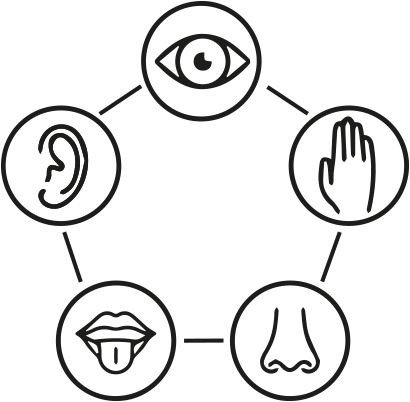Sensory Studies of Science
| Sensory Studies of Science
2013 Seminar University of Vienna Coordinator & main teacher
|
| Intended learning outcomes (more on programme level)
/ |
| Learning objectives (course specific)
/ |
| Objective statement (course description)
What role do the senses play in the process of making and communicating scientific knowledge? The traditional view of science as a disembodied and a-sensuous practice has recently been called into question by scholars in STS and the history and anthropology of science. Not only have these scholars investigated the “visual cultures of science”, but they have also shown the importance of sound, touch, smell and taste in scientific practice – and indeed, they have shown that the different senses interact with each other in the making of scientific knowledge. In this course, we will explore the role of the senses and embodied practices in a variety of scientific disciplines and different sites of knowledge-production, and encounter the method of sensory ethnography as a tool to study the senses in the sciences. |
| Type of course :
Content course |
| Target group :
/ |
| Pedagogical approach:
Traditional |
| Activities:
See themes in bibliography |
| Assessment of learning:
Requirements for passing the course: To pass the seminar, students are expected to complete the following tasks:
Grading scheme: 20% In-class participation For your ethnographic study, you will need to hand in on moodle a short proposal (about half a page) of what you intend to do. Write a short report (about 2 pages) detailing your most important findings and most striking observations. You are free to choose your own subject for your final essay related to the theme of the course. You may choose to make use of your ethnographic research presented during class, but are not obligated to do so. Whether your essay is primarily ethnographic, historical or theoretical, it must show a thorough engagement with the literature from this course. It should be between 12 and 15 pages long. |
| Effect (witness account, evaluation of the course) |
| Additional biblio sources
The visual culture of science?
Optional reading:
Science and the senses: questioning the dominance of words, numbers and images
Sensory histories of science
The sciences of the senses
And read one of the following:
Sensory ethnographies of science
And read two out of the following three:
In this session, we will also discuss your plans for a small ethnographic research project of your own, to be discussed during the last two classes. Before the session, think about where and how you plan to conduct your research, and hand in a brief proposal. The literature from this session should help you to develop a research design, but don’t hesitate to already browse through the literature for the final two sessions for inspiration, too. The senses in the lab
Optional reading:
The senses in the field and on the test-site
The senses in the library and study
During this discussion, we will draw and reflect upon your own experiences of doing a sensory ethnography of an academic library (unless you are studying a lecture for the next meeting). In preparation of the meeting, submit a short report (about 2 pages) describing your most interesting findings and most striking observations by 09:00 am on the day of the class on moodle. The senses in the lecture hall
During this discussion, we will draw and reflect upon your own experiences of doing a sensory ethnography of a lecture (unless you studied a library for the previous meeting). In preparation of the meeting, submit a short report (about 2 pages) describing your most interesting findings and most striking observations by 09:00 am on Monday, the 27th of May on moodle. |
